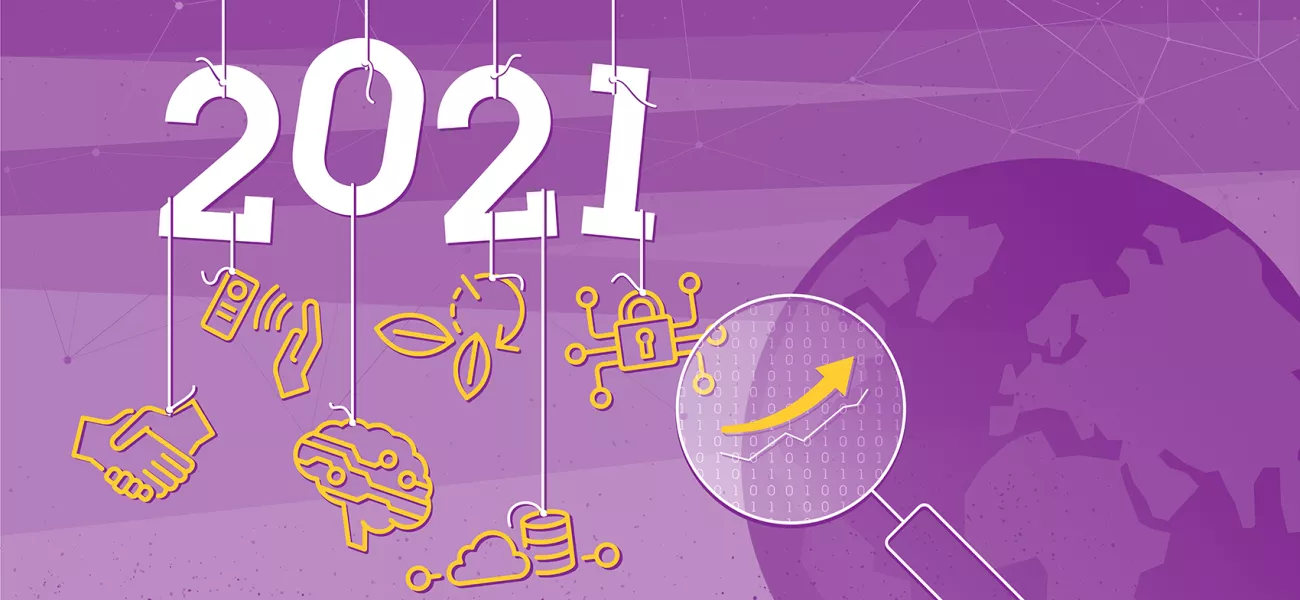
“Social distancing,” “lockdown,” “safe gatherings.” These were just a few buzzwords that rose to prominence last year because of the pandemic. But others that have long-been buzzwords also played an increasingly important role such as “AI-enablement” “machine learning” and “edge-computing,” as well as “convergence.”
The world changed last year, and much of what has happened has carried over into 2021 as we continue to deal with the fallout from the pandemic. We recently talked with Bob Moore, Marketing Director, Axis Communications, Inc. about the impact certain buzzwords have had on businesses across the country, the security industry, and Axis. What we found interesting is how the different terms and concepts he brought to the table not only connected in many ways but that all will most certainly play a critical role in a post-pandemic world.
AI-enablement, edge-computing and machine learning
“While these terms aren’t new, their value in today’s society has become increasingly apparent, especially during the pandemic,” says Moore. “Network technology based on sight, sound, and analytics can help business owners secure their facility when it’s short-staffed or closed due to lockdowns. It can help companies enhance business optimization and allow them to stay in compliance with new health and safety guidelines.”
Network technology based on sight, sound, and analytics can help business owners secure their facility when it’s short-staffed or closed due to lockdowns.

We previously wrote a blog post that talked a lot of about how retailers can use analytics to keep customers safe and improve in-store performance. But they’re also useful beyond retail environments. Analytics can be used in industrial facilities, schools, hospitals, and many other settings. A hospital, for example, might use a network audio solution using Axis network cameras (equipped with AXIS Crossline Detection) and network speakers to direct everyone to a specific entrance so they can be checked for symptoms of COVID-19 before entering. When the analytics detects a moving object cross a user-defined virtual line, it triggers AXIS C1310-E Network Horn Speaker to automatically relay a preconfigured message asking them to proceed to that entrance.
On the other hand, facilities could enhance their security with AXIS Object Analytics. This edge-based video analytics application comes automatically preinstalled on compatible Axis cameras and adds value to your camera with AI-based detection and classification. Using intelligent algorithms based on machine learning and object classes that have been pre-trained by Axis, it automatically detects and classifies humans and vehicles while also reducing false alarms. Over the past year, many facilities have had to operate with fewer staff or been forced to close entirely for periods of time. This application is ideal for surveillance in unattended areas such as public buildings, warehouses, parking lots, and industrial sites.
Moore says all of this technology will also have a place in the post-pandemic world.
“First and foremost, it’s important to think long term and research any technology before adopting it,” he explains. “Businesses need to ask themselves, how is this going to help increase security, keep people safer, and enhance business optimization today as well as five-plus years from now? And the fact of the matter is, network surveillance solutions can help companies meet today and tomorrow’s challenges head on.”
Lockdowns, social distancing, and new health protocols
It’s been about a year since the first stay-at-home orders and lockdowns were issued and new health guidelines put in place in an attempt to curb the pandemic. What’s been the impact of these protocols and what are the long-term effects?
“Consumers have been forced to alter their shopping habits during the pandemic,” explains Moore. “And while the allure of in-store shopping isn’t going away anytime soon, there’s research that indicates the appeal of curbside pickup won’t either for consumers and stores. Businesses that might have not upgraded their technology last year to take advantage of this growing trend haven’t missed the boat.”
Retailers, for example, can use Axis’ license plate recognition to help generate an alert when a customer arrives in front of a store for pickup. Or they could use AXIS Crossline Detection to activate an access control solution and alert an employee that a customer is at the door ready for pickup.
Moore also pointed out that network surveillance solutions are a great tool to help enforce social distancing and other health protocols.
“Take bodycam technology,” says Moore. “AXIS Body Worn solution can be used to positively influence the action of the person wearing the camera or deter bad behavior. This could be of interest to retailers and restaurants who offer delivery. It can also give retailers verifiable proof that a package was delivered and is in good condition. And it provides hospitals with verifiable proof that PPE equipment is being properly used. The solution is a natural extension of a business’ current security setup.”
Take bodycam technology,” says Moore. “AXIS Body Worn solution can be used to positively influence the action of the person wearing the camera or deter bad behavior. This could be of interest to retailers and restaurants who offer delivery.
Convergence
The digital transformation has been well-underway for years. It’s more than about simply adopting the newest technology. It’s about adopting technology that focuses on people and processes. On the security front, that means embracing network technology and analytics, which we’ve already described. The pandemic has also placed greater importance on the idea of convergence where silos are broken down and multiple facets of an organization work together in greater harmony. It means the integration of information security and physical security. The more intelligent information companies can quickly access, the easier it is for them to detect, prevent, or mitigate all types of threats.
In a converged world, physical and IT teams work cross-functionally to create powerful security practices that guard all points of entry. There’s less uncertainty and greater accountability about who’s in charge. This becomes extremely important as companies adopt newer network technology. In a recent Axis study, nearly 60 percent of end customers planned to or were willing to utilize network surveillance solutions.
The benefits of converging are clear according to a recent ASIS study. Of 1,000 industry leaders and executives that were polled, 44 percent said convergence hadn’t yielded a single negative result. Benefits included greater alignment, increased communication and cooperation, unified practices and goals across physical security, cybersecurity, and business continuity, among others. A healthy portion of respondents looked favorably upon converging.
“The health crisis forced many companies to migrate entirely online,” says Moore. “Many are still operating this way while others are and will continue to take a hybrid approach. This may or may not accelerate adoption of convergence, but I think it helps highlight just how valuable it can be, especially during a major event such as a health crisis.”
